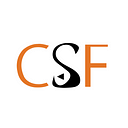Memoirs of a Homemaker
By Harper Chew
This blogpost is the second of a two-part series on tech-bio, featuring a short work of fiction where we explore what the future might look like through the diary entry of an introspective homemaker.
Each a vector, each a node. The string tying person to person together branches and stretches out like a vast web. We move — seamlessly — from one place to another without consciously mapping the spaces, places, and bodies we temporarily encounter. In the wake of COVID-19, we were thrust into a state of hyper-awareness, so very aware of biology and so very conscious of every germ-ridden surface. It has been some time since then and with each epidemiological crisis, we emerged stronger as a collective. We don’t politick about mask-wearing now, we recognise the complex network in which we live in.
Life is everchanging, yet the responsibility of a homemaker remains forever timeless. Each morning, I wake up about an hour earlier than everyone else, greeted by the soft orange glow of my robot shaped household assistant. It greets me hello and awaits my input. Its interface displays the vital signs of my loved ones recorded throughout the night, all thanks to a small, tab like attachment on our arms reminiscent of the clunky glucose monitors of ye old days. We got them from the city’s LiveHealth initiative, and it truly tracks everything. — pulse, vitamin, sugar levels and so on. With this data, I can finetune the morning’s breakfast. I export their health data into the kitchen app, and it generates a list of recommended recipes. My partner needs to lower their cortisol so no coffee; my kid needs to up their iron intake so maybe some sweet potatoes. You would think with how high-tech everything is that I would be able to print my food, but no! Something about it being ‘too dangerous’ or ‘prone to malicious activity’… I think it’s just Big Grocer being in denial over their twilight days.
After a perfectly nutritious breakfast, I engage in the usual song and dance in motivating my child to get ready for the day -you know how they are at that age. Now five years old, they’ve undergone mandatory genetic testing at two to obtain their polygenic risk score. Everything seems to be fine with the kid, save for a higher likelihood of having difficulty with reading. The doctors recommended we have them go through gene therapy to alter the KIAA0319 gene responsible for the disability. I strongly objected. Some would say I am putting my child at a disadvantage, but I simply do not see the need nor the imperative to fix something so minor, I find that mistakes and natural-born flaws to be especially endearing and human. I am not alone in my au naturel stance. On Saturdays I bring them to our local reading group. There they get to play, read, and make new friends. It takes a village to raise a child, and the village so happens to be composed of loving parents with children who share the same polygenic risk score for dyslexia.
While my child runs amok, I take a trip to the grocer next door. Now that we have mastered biology, all produce is locally grown and freshly printed. It’s quite straightforward, really. If you knew the programming language of cells you can program it to do anything and everything. Meats, fruits, vegetables, exotic French jam (I believe it’s called… confiture?), it is a time of abundance and wealth.
Watching my self-ordered meat grown in the grocer’s biomaker, a sense of deep introspection fell on me. I was born on the tail-end of the old days — where people were so squeamish over anything even hinted at being ‘artificial’. How can anything on Earth be artificial? After all, the very fabric of our world comprises of locally based atoms. Each individual is a collection of cells interlinked; every interaction is a thread woven into the broader network of human existence. What is artificial meat if not the cleaving and reassembling of some biological code within cells? Everything consists of biological matter, it took us a long time to realise that. I’m glad we did.
Harper Chew was Research Assistant at the Centre for Strategic Futures.
The views expressed in this blog are those of the authors and do not reflect the official position of the Centre for Strategic Futures or any agency of the Government of Singapore.
